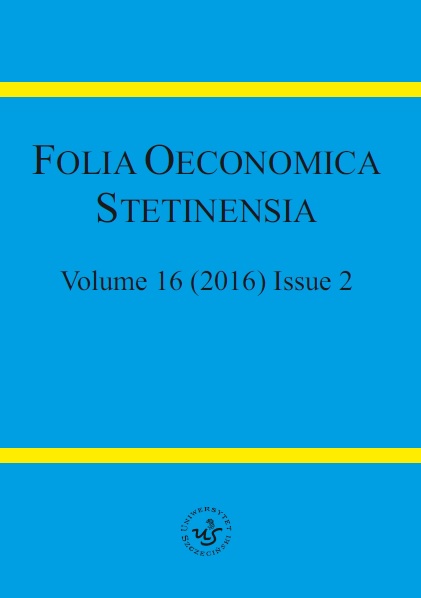Income Absolute Beta-Convergence of NUTS 3 Level Regions in New EU Member States before and during a Crisis
Income Absolute Beta-Convergence of NUTS 3 Level Regions in New EU Member States before and during a Crisis
Author(s): Paweł FolfasSubject(s): Economy, National Economy, Supranational / Global Economy
Published by: Wydawnictwo Naukowe Uniwersytetu Szczecińskiego
Keywords: income convergence; NUTS 3 regions; new EU Member States; crisis; spatial dependencies
Summary/Abstract: This paper is aimed at answering the question of whether absolute income (GDP per capita) beta-convergence exists in the case of regions in new EU Member States before the period of 2000–2008 and during the 2008–2011 crisis. The sample consists of 211 regions (NUTS 3-level) of Bulgaria, Czech Republic, Estonia, Hungary, Latvia, Lithuania, Poland, Romania, Slovenia and Slovakia. The research is based on econometric models, namely on the spatial lagged model (SLM), the spatial error model (SEM) and the Durbin spatial model which contrary to the ordinary least squares the (OLS) model include possible spatial dependencies. The SLM and SEM models as well as the Durbin spatial model detect the absolute income beta-convergence on the level of about 1% during the years 2000–2008. Additionally, models do not confirm the existence of absolute income beta-convergence during the crisis of 2008–2011. SLM models (which offer the most reliable findings) find a spatial correlation (measured by the rho-parameter) at a level of 0.75 during 2000–2008 and 0.35 during 2008–2011. Thus, absolute income beta-convergence in the case of NUTS 3 regions in 10 new EU Member States existed only in the pre-crisis period and this period is characterized by much stronger spatial dependencies than the period of 2008–2011.
Journal: Folia Oeconomica Stetinensia
- Issue Year: 16/2016
- Issue No: 2
- Page Range: 151-162
- Page Count: 12
- Language: English

